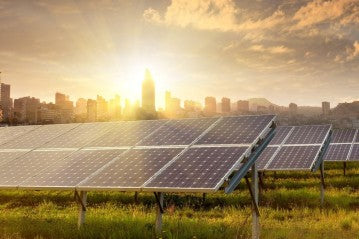
Solar energy has emerged as one of the most promising and sustainable sources of renewable energy. With its eco-friendly nature and abundant availability, solar power is becoming increasingly popular among environmentally-conscious customers seeking to reduce their carbon footprint and cut down on energy costs. However, not all locations are created equal when it comes to harnessing the sun's power. In this blog post, we will explore the best locations for solar energy, ensuring you make an informed decision while purchasing solar energy-related products. So, let's dive in and discover the sunny spots that can brighten up your energy future!
1. Solar Energy Potential and Latitude
The sun is the primary source of solar energy, and its intensity varies depending on your location's latitude. Regions closer to the equator receive more direct sunlight throughout the year, making them ideal for solar energy production. Countries located in the tropical and subtropical zones, such as parts of Africa, the Middle East, and Central and South America, boast abundant sunshine and high solar irradiation levels, providing an excellent environment for solar power generation.
However, this doesn't mean that solar energy isn't viable in higher latitudes. Even countries and regions in temperate climates, like Germany and certain parts of the United States, have successfully embraced solar power with the help of advanced technologies and supportive government policies.
2. Climatic Factors and Solar Energy
While sunlight is the essential factor for solar energy, other climatic elements come into play when assessing the solar potential of a location. Cloud cover, rainfall, and atmospheric conditions can impact the efficiency of solar panels. Surprisingly, some areas with moderate sun exposure may outperform sunnier locations due to these factors.
One such example is Germany. Despite its relatively cloudy weather, Germany is a global leader in solar energy installations, largely due to its progressive energy policies, financial incentives, and commitment to sustainable practices. So, when considering solar energy products, don't discount locations with milder climates; they might still hold immense potential.
3. Altitude and Solar Energy
Altitude is another crucial aspect to consider when evaluating the viability of solar energy in a particular location. High-altitude regions tend to receive more sunlight throughout the year, as they are closer to the sun's rays and experience fewer obstructions such as cloud cover or pollution.
The Andean region in South America, with its high-altitude cities like Cusco and La Paz, benefits from this phenomenon. These areas can provide excellent conditions for solar energy projects, enabling residents to tap into the vast potential of solar power.
4. The Influence of Temperature on Solar Efficiency
Solar panels work based on the photovoltaic effect, where sunlight is converted into electricity. Interestingly, solar panels' efficiency can be affected by temperature. Contrary to popular belief, very high temperatures can slightly reduce solar panel efficiency, causing a drop in electricity production.
This means that extremely hot locations might not always be the best choice for solar energy generation. In some cases, moderately warm regions with ample sunshine, like parts of Southern Europe, Australia, and the southwestern United States, might be more suitable for maximizing solar panel efficiency and overall energy output.
5. Urban Development and Solar Potential
In urban areas, rooftops and vertical surfaces represent untapped opportunities for solar energy utilization. Urban solar panels can be integrated into buildings, helping reduce energy consumption and contributing to a cleaner environment. Cities like Tokyo, New York, and Seoul have seen significant increases in solar installations due to innovative approaches and supportive policies.
Furthermore, floating solar farms on lakes and reservoirs have gained traction in densely populated regions where land availability is limited. Such initiatives have been successful in countries like China, India, and the United Kingdom, paving the way for sustainable energy solutions in urban landscapes.
Conclusion
In conclusion, the best locations for solar energy are not limited to the sunniest places on Earth. While high solar irradiation is undoubtedly beneficial, other factors, such as latitude, altitude, climate, and urban development, play essential roles in determining solar energy potential. Embracing solar power offers customers an opportunity to contribute to a greener future while reducing their dependence on traditional energy sources.
When purchasing solar energy-related products, it is crucial to consider your specific location and its solar potential. Whether you reside in a tropical paradise, a temperate city, or a high-altitude region, solar energy can be harnessed effectively with the right technology and supportive policies. Remember, going solar isn't just about chasing the sun; it's about embracing a sustainable lifestyle and making a positive impact on our planet.
So, let's harness the power of the sun and brighten our future, one solar panel at a time!

0 Kommentare